Living with Oil?
Living with Oil?
An Essay by Natalie Virginia Lang
*
What is the use of a house if you haven’t got a tolerable planet to put it on?
-Henry David Thoreau, Letter to Harrison Blake, May 20, 1860
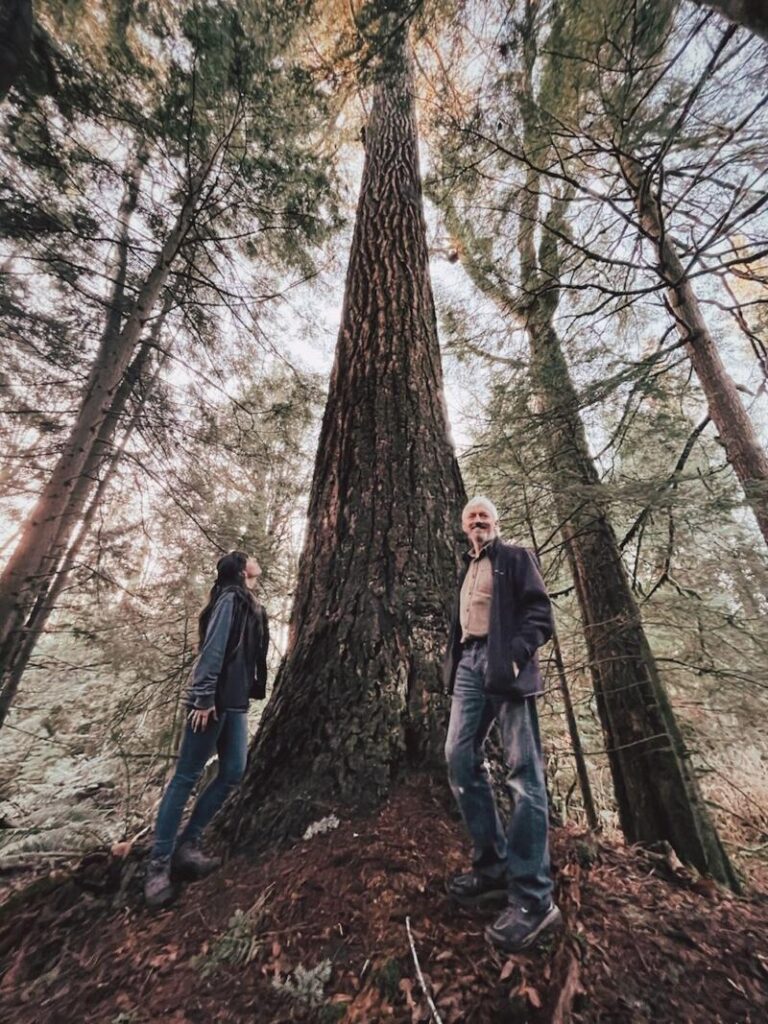
On July 18, 2024, Minister of Environment and Climate Change Steven Guilbeault commented on the funding announcement of eighty-nine million dollars for ten projects aimed at promoting biodiversity across Canada. Fifty million of those dollars are intended for BC to complete three projects. This funding is part of a $1.4 billion dollar commitment to reduce greenhouse gas emissions and restore natural ecosystems. Part of this is tied to protecting a quarter of Canada’s lands and waterways by 2025. Today, 13.7 percent of land and 14.7 percent of waters have been protected. This comes in the wake of the federal government spending thirty-four-billion dollars to expand the Trans Mountain Pipeline. According to a Global News article in May of this year, the expansion increased capacity from 300,000 to 890,000 barrels of crude oil moved per day from the oil sands in Alberta to the coast off Burnaby Mountain. From there the oil is loaded into oil tankers destined for overseas markets.

When the Minister stated that “Nature is our greatest ally,” explaining that it “enriches our lives” and “protects our communities” with clean air, fresh water, medicines, and acting as a potential barrier against the impacts of extreme weather, I nodded along in agreement. Yes, nature does do all of this, and more. Supporting biodiverse environments is key to communities hoping to mitigate the impacts of climate change and cultivate a good life. This funding announcement was good news.
Later that day, I was on my way home to Sumas Mountain in Abbotsford, excited about the funding and curious about where it would end up. As I turned onto Sumas Mountain Road from the base of the mountain where Sumas Lake once ebbed and flowed, I began to hope that some money would be focused on Sumas Mountain itself, or perhaps the disappeared lake bed at its base.

As an important biodiverse area this place must be considered a crucial ecosystem. Populations are increasing in the Fraser Valley and Sumas Mountain is a desirable location. This brings increased emissions and clearing of trees to build neighborhoods and homes, displacing plant and animal species. These realities, coupled with increased gravel mining and the Trans Mountain pipeline funneling oil to the Sumas Terminus and beyond, pose increased challenges to the protection of the environment—an environment that is desperately needed as the globe continues to warm up and react in extreme ways with the onset of climate change.
Studies like the Collaborative Stewardship Forum’s Sumas Mountain Study, and The Sierra Club BC report (Peter Wood, 2021) on Reducing Community Climate Risks Through Forest Protection and a Paradigm Shift in Forest Management suggest that the protection of this area, and others like it, is absolutely essential to biodiversity—to the clean air, fresh water, and medicines, as Minister Guilbeault so aptly pointed out. Earlier this year, on June 2, researchers at UBC published claims that “By restoring Sumas Lake—Semá:th Xhotsa—we can help the region adapt to future floods, facilitating climate resiliency in the long term.” There is great potential at Sumas Mountain for the protection of biodiversity that will support climate resiliency in this area, if the funding will reach it.
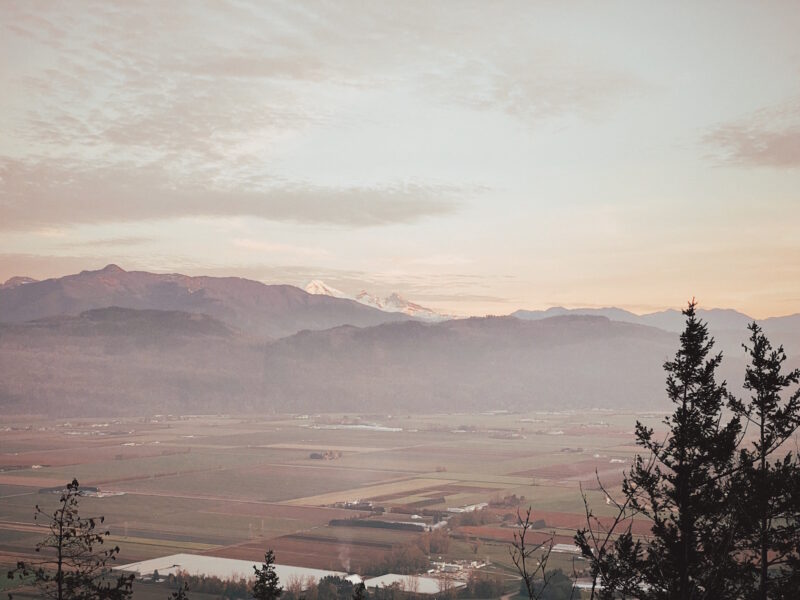
Sumas Mountain enriches lives by giving local people a calm and cool area where they can retreat, to which they can be proud, that they can protect and love, elements that every human can utilize to sustain their mental health in a world that appears to be burning all around us. But it does more than this too. As the home of keystone species like the mountain beaver, the northern red-legged frog, and the barn owl, if Sumas Mountain folds to excessive development, or resource extraction and transportation, it is likely to seriously damage a variety of important plant and animal species. Keystone species are those who are critical to the structure and function of an ecosystem. They are required to maintain the biodiverse network in this part of the world, and without them, ecosystems may fail to exist. When ecosystems fall, the environments that support our water and food sources, the cooling of the earth and the mitigation of flooding, are also in danger. This means, we too are in danger.

Astra Taylor in The Age of Insecurity: Coming Together as Things Fall Apart clarifies that “biodiversity is essential to our existence: to the security of the ecosystems we are embedded in, the food systems we rely on, and our ability to avoid future pandemics. When an ecosystem is healthy, biodiversity buffers the transmission of deadly pathogens, genetic variation [in biodiverse ecosystems] dilutes and disrupts pathways of contagion.” So, when ecosystems are protected, healthy, and filled with a wide variety of plant and animal species that work in tandem with one another, human communities become more secure. This also means that the shrinking and fragmenting of habitats, decreasing biodiversity, increases chances of disease and food insecurity, among other deadly environmental catastrophes like extreme wildfires, heat domes, excessive spontaneous flooding, and prolonged drought.
“We must work with the natural world rather than against it,” Taylor reminds us, “cooperating with the sun and wind to harness renewable energy, with the oceans and forests to sequester carbon without choking and acidifying them, with biodiverse plants to cool our cities and feed the world, with animal allies like the water-protecting and firefighting beavers who provide refuge to other species.”
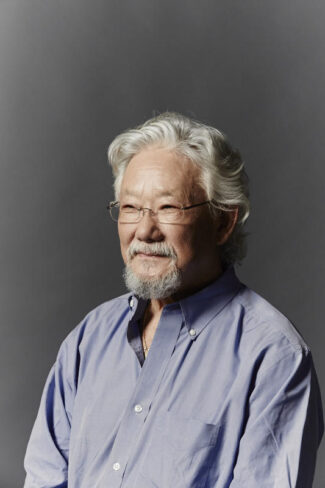
These sentiments from Taylor are not new. Environmental champions like Rachel Carson, Suzanne Simard, Alexandra Morton, Robin Wall Kimmerer, David Suzuki, and Aldo Leopold, among countless Indigenous peoples and First Nations across Canada and other parts of the world all echo that “Nature is our greatest ally.” We, as stewards of biodiverse ecosystems, intertwined with the health of forests, grasslands, wetlands, and oceans, must act in good faith with that ally before our callous disrespect becomes our undoing. Even “Plato [399 BCE] lament[ed] land destroyed by mismanagement, describing the barren soil, absence of trees, and abandoned shrines where fresh springs used to be as ‘the skeleton of a sick man, all the fat and soft earth having washed away.”
With the voices of Plato, Taylor, Carson, and Kimmerer, swimming in my mind, I came to the top of a hill along Sumas Mountain Road. To my right, grey dust rose from the massive gravel quarry where truck after truck were lined up at the road entrance, their trailers filled with ground up rock of all sizes. In my rearview mirror, I could see several empty trucks coming up the hill ready for their refills.
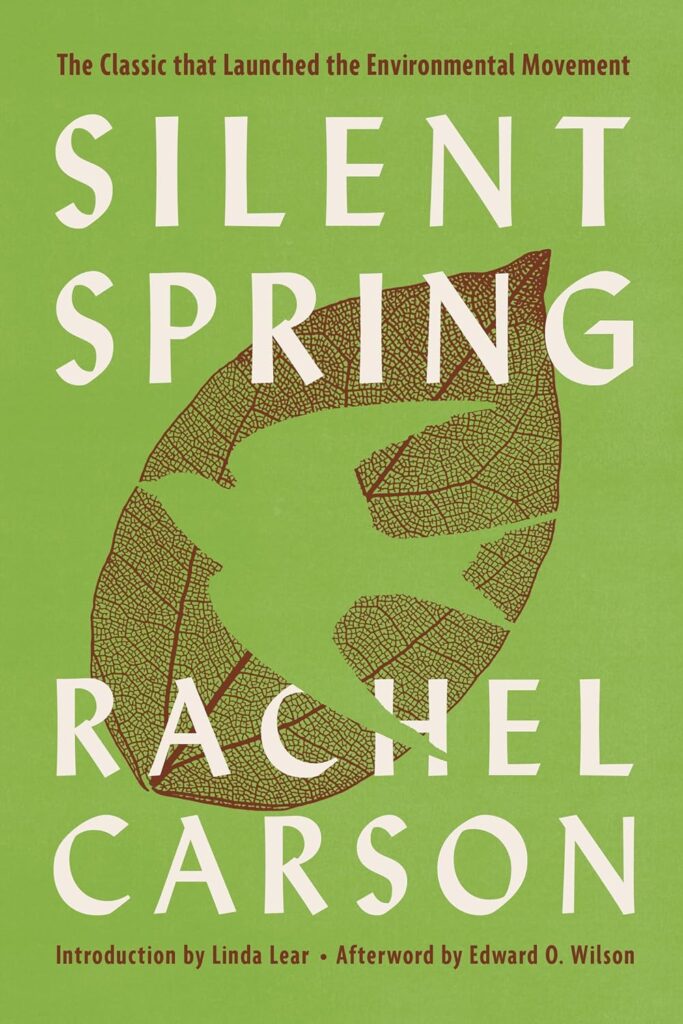
Farther along, evidence of the recently installed Trans Mountain Pipeline lined the road. Post construction, the torn-up earth had been replaced and seeded. Now, the start of green grass covered the landscape. Little posts stuck up here and there, and scattered limbed logs marked the path leading beyond the gravel quarry behind me, along Sumas Mountain Road, and headed for its destination at the Sumas pump station and terminal where seven massive white drums rose into the sky, above the remaining pockets of trees. These drums hold approximately 890,000 barrels of crude oil. They are not hidden. They are not shy.
As I drive along the terminal property, passing a small sign labelling a sensitive ecosystem and sandwiched between the pipeline with decimated trees and the road, I recall the discussions around the Trans Mountain Pipeline itself. I remember wondering why the purchase of a pipeline was even a conversation when opportunities to support renewable energy, like solar and wind were, and still are, possible. This isn’t to mention the reality that oil—its extraction, movement, shipment, waste, and spills—is a deplorable contributor to the climate crisis, loss of biodiversity, global warming and global weirding, all of which are directly impacting the health and survival of countless species, and therefore people and entire communities, across the globe.
An article titled “What is the Trans Mountain pipeline—and why should I care?” published by Carl Meyer in The Narwhal on September 18, 2023, stated that “The Trans Mountain expansion destroyed key habitat.” The habitats in danger range from sensitive biodiverse forest systems to wetlands and oceans. This has not considered any oil spills that are likely to come as oil is pumped through the pipeline and out to tankers waiting along the coast.
In June 2020, Sean Kheraj, associate professor of Canadian and environmental history at York University, published his research on the history of oil spills across Canadian pipelines with University of Toronto Press Journals Division. Kheraj’s research shows that “all known spill data from 1961 to 2013 reveals a total of eighty-one liquid hydrocarbon spill events on the Trans Mountain pipeline, averaging 1.53 spills per year.” These leaks and spills are the result of operation errors, corrosion, and natural influences such as land slides and flooding.
I can recall multiple spills at the terminus here on Sumas Mountain. One such spill occurred just a few years ago in June 2020. It is a strange sensation to be in the woods, to walk among the fir and cedar trees, wildflowers and wildlife; to watch spring birds flutter from branch to branch chatting about this and that, then to smell the sickly-sweet odor of oil wafting into the forest. It was reported by Simon Little of Global News that approximately 1,500 liters spilled at the Sumas Pump station.
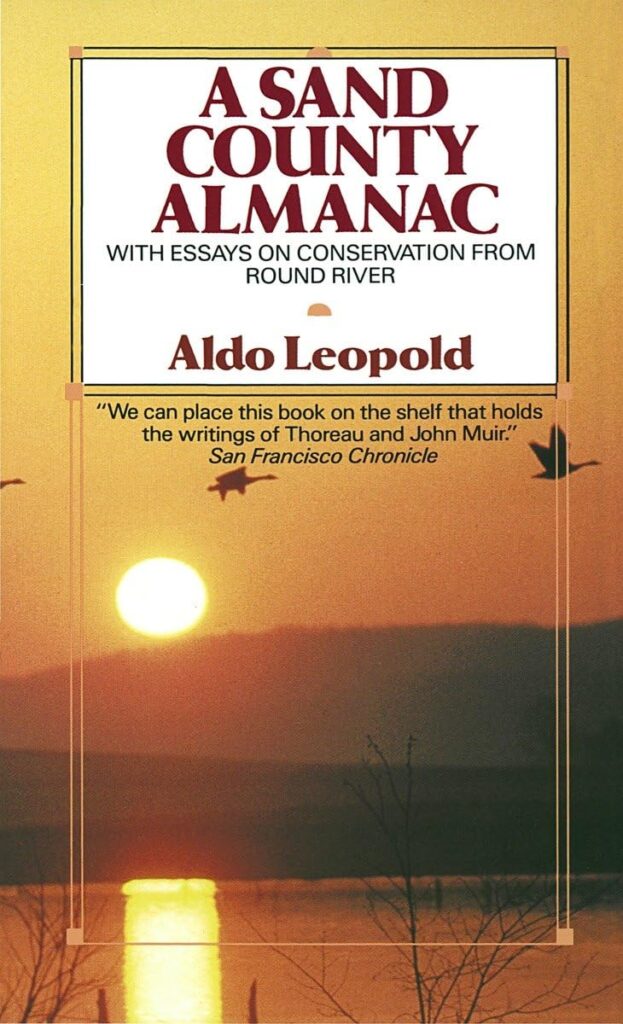
While Trans Mountain claimed that “The free-standing oil [had] been recovered” serious concerns about groundwater and other adjacent land and air quality arose. The article quoted Chief Dalton Silver from the Sumas First Nation. He was “concerned the spill got to that size. … you can contain it, you can work on getting rid of the excess oil, but there are impacts that last a lot longer.”
Despite increased technology to monitor pipelines and reduce leaks and spills, Sean Kheraj’s study explains that “a small percentage loss to spills can constitute significant environmental risk. These risks include water contamination, wildlife habitat disruption, soil quality degradation, and, in cases of accidental ignition, the loss of human life.” If we are siphoning oil from the earth and sending it cross country then across the sea, spills and leaks will continue to happen. They will continue to impact whatever environment is nearby.
When I reached the intersection where I could turn left up Whatcom Road and cross another section of the pipeline, or continue straight and remain on Sumas Mountain Road, I think back to those oil spills that have occurred here—I recalled four in the last fifteen years. I remembered the questions about water and air quality, the worries about how local environments might be impacted, despite Trans Mountain claims that there would be no impacts. What, we wondered will this do to us? I considered again, the pipeline’s thirty-four-billion-dollar budget next to the fifty million dollars dedicated to clean air and fresh water. It was undeniably clear to me what priorities were front and centre, and it wasn’t the environment.
In 2018, the federal government first purchased the pipeline and its expansion project for $4.5 billion dollars—ensuring it would be built. This came after protestors, First Nations, and provincial governments in BC strongly opposed the pipeline. The dissent became so intense that the company threatened to walk away from the project. After the purchase Trans Mountain was made part of a Crown corporation and benefited from government financing and subsidies. Despite loud disapproval from many parties, and an initial Federal Court of Appeal ruling that Canada both failed to meaningfully consult with First Nations and ignored the impact of increased oil tanker traffic, the pipeline went ahead with construction.
Although opposition continued, alongside cries for alternative methods of energy production, in the wake of a global pandemic, atmospheric rivers, and heat domes killing people in their homes, the pipeline was completed. It was operational on May 1, 2024. The final price tag was the result of ballooning costs all the way through. In 2016, the projected amount was $6.8 billion. By 2018, the cost was going to be $9.3 billion. Then, in 2020, it was $12.6 billion. Two years later, the estimate was $21.4 billion. The following year it was $30.9 billion, and by the time the project was completed the total cost was estimated at thirty-four billion dollars.

When I think of these numbers, I am flabbergasted. When I consider what the government is providing conservation groups across the country—eighty-nine million dollars total with fifty-million dollars for BC—because healthy biodiverse ecosystems protect our communities, acting as barriers against extreme weather in an increasingly extreme global climate, I had to laugh. Was this a joke?
If it feels like doublespeak for a government to say that ecosystems are important and we are working to protect them—here’s fifty-million dollars—then turn around at the drop of a hat and pay thirty-four-billion dollars to ensure that a pipeline for crude oil is built and operational, you are not alone. This felt like doublespeak to me.
As we blindly march farther into an age of climate catastrophe, of heat domes, atmospheric rivers, extreme drought, monstrous forest fires, and mass migration as a result of food and water insecurity, I find myself really asking where our values lie. To find my answer, all I had to do was follow the money. Fifty million dollars and three projects for conservation in British Columbia because “Nature is our greatest ally.” Thirty-four billion dollars to build a pipeline so the extraction of crude oil can continue, and money can be made.
There are green solutions to the production and use of energy. The Burchill Wind Project in Saint John, New Brunswick reported that their historic utility-scale wind farm (completed and supplying power to the grid in June 2023) produced enough energy last year to cut consumer costs by close to half. Despite concerns from New Brunswick Power vice-president Brad Cody, in an article published by CBC News in July 2024, that “There is an electricity system that needs to be paid for,” the success of the Burchill Wind Project is something to be celebrated.
The reality that wind turbines can capture clean energy and provide it to the community, at a lower price, is a massive win for the environment, for sustainable energy, for the financial viability of similar projects, and to people like you and me who rely on electricity every day. As I was reading about the Burchill Wind Project, I grew concerned about big energy continuing to block green energy projects because their infrastructure (Trans Mountain Infrastructure for example) must be paid for. The thirty-four-billion-dollar pipeline price tag flashed across my mind.
Will the world continue to burn while we pay for a pipeline that enables oil companies to mine the earth, increase greenhouse gases, and decimate our ecosystems, while there were green solutions all along? Wind projects and others like it is the direction Canada must be going in. Why then, does it feel like we are sliding backward? Why are we holding on to an old world of energy, like a balding man holds on to his last whisps of hair? Shouldn’t we just shave our heads and embrace the future?
But what about that all too common talking point asking what we will do when the wind doesn’t blow, and the sun doesn’t shine? What about it? The earth is naturally wind and solar powered—the wind has always blown and the sun has yet to stop shining. Instead of falling prey to this tone-deaf argument aimed at shutting down clean energy projects, we might look to projects dedicated to the production and storage of clean energy.
In Finland, for example, Polar Night Energy developed what is called a “sand battery.” An article published in dezeen explains that the battery “works by converting the captured renewable electricity into hot air by using an industrial version of a standard resistive heating element, then directing the hot air into the sand.” This “excess renewable energy… can later be sent to homes and business” to heat them. While projects like this are few and may be in their infancy, if they received the same research and development funding that oil and gas companies have enjoyed since the dawn of the automobile, the options for harnessing, storing, and transmitting clean energy, would increase exponentially. Our dependence on oil would then become a thing of the past. Perhaps, though, this is exactly what big energy companies fear. The question isn’t whether we can adopt sustainable energy resources, it is whether we are willing to adjust our current energy sectors to make it happen.
Our world is burning but it is not burnt yet. Decisions made today will impact the futures of billions of children, grandchildren, and great grandchildren. With their faces in our minds, what are we expecting to achieve in this clear and direct picture of what we value? It is clear that growth at any cost, resource extraction at any cost, and economic progress at any cost, is the goal in our society today. That is what the Canadian government, Trans Mountain, and other big business energy companies tell me, despite the direction that we must be going in, and indeed could be going in.
As I pull off the road and down the drive toward my home on Sumas Mountain, where I will take a walk in the woods, there is one thinker’s phrase that nags as I come to terms with the reality of this doublethink, doublespeak, society. Thoreau’s prophetic statement in an 1860 letter to Harrison Blake, is all too relevant– “What is the use of a house if you haven’t got a tolerable planet to put it on?”
*
Natalie Virginia Lang is a teacher and writer. She is an alumnus of the Graduate Liberal Studies program at SFU and has contributed essays to BCR, including “Remnants of Sumas Mountain” and “Letters from the Pandemic: Dear Will.” Lang is the author of Remnants: Reveries of a Mountain Dweller (Caitlin Press, 2023), a memoir inviting readers to re-examine our relationships with the natural world. [Editor’s note:Natalie Virginia Lang has reviewed books by Betsy Warland, Christina Myers, Catherine McGregor and Shailoo Bedi (eds.), Rick Antonson, Dave Doroghy, Sheena Kamal, for The British Columbia Review.]
The British Columbia Review
Interim Editors, 2023-25: Trevor Marc Hughes (non-fiction), Brett Josef Grubisic (fiction)
Publisher: Richard Mackie
Formerly The Ormsby Review, The British Columbia Review is an on-line book review and journal service for BC writers and readers. The Advisory Board now consists of Jean Barman, Wade Davis, Robin Fisher, Barry Gough, Hugh Johnston, Kathy Mezei, Patricia Roy, Maria Tippett, and Graeme Wynn. Provincial Government Patron (since September 2018): Creative BC. Honorary Patron: Yosef Wosk. Scholarly Patron: SFU Graduate Liberal Studies. The British Columbia Review was founded in 2016 by Richard Mackie and Alan Twigg.
“Only connect.” – E.M. Forster
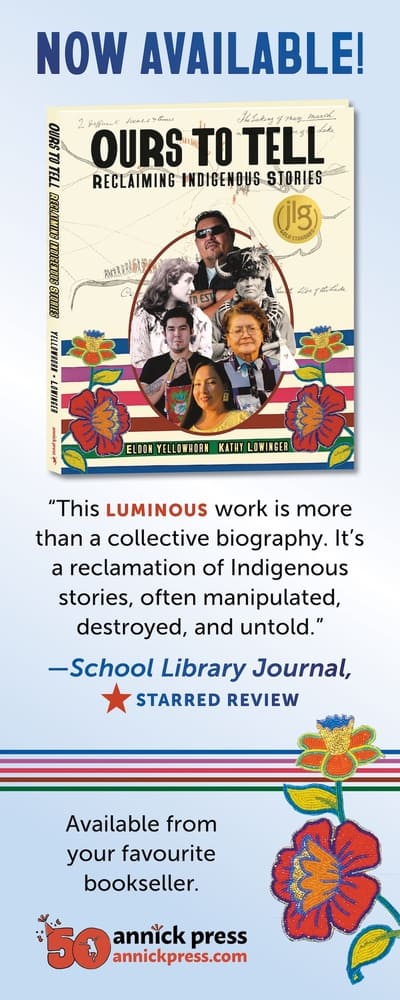

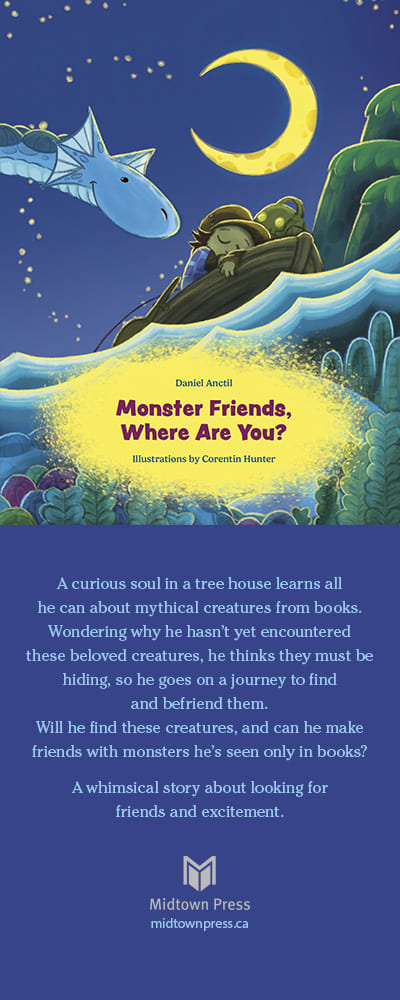
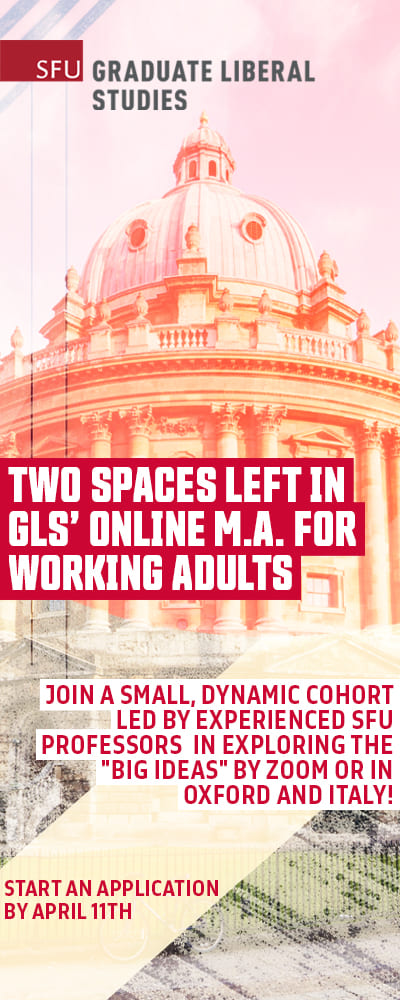

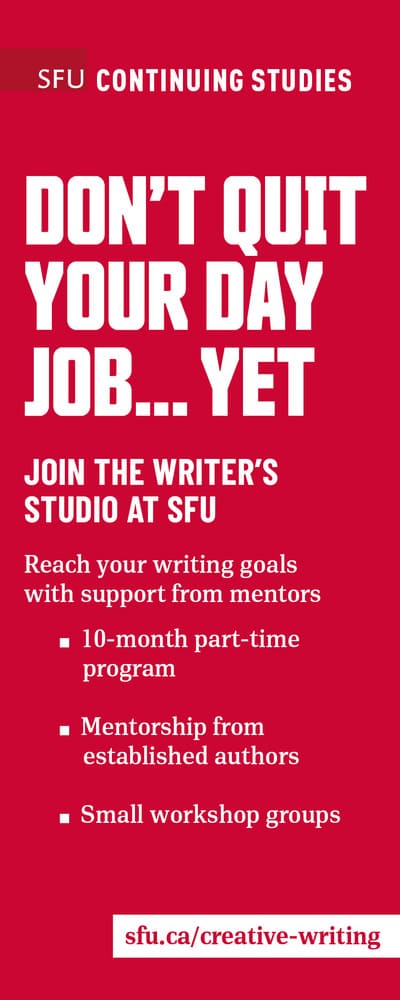
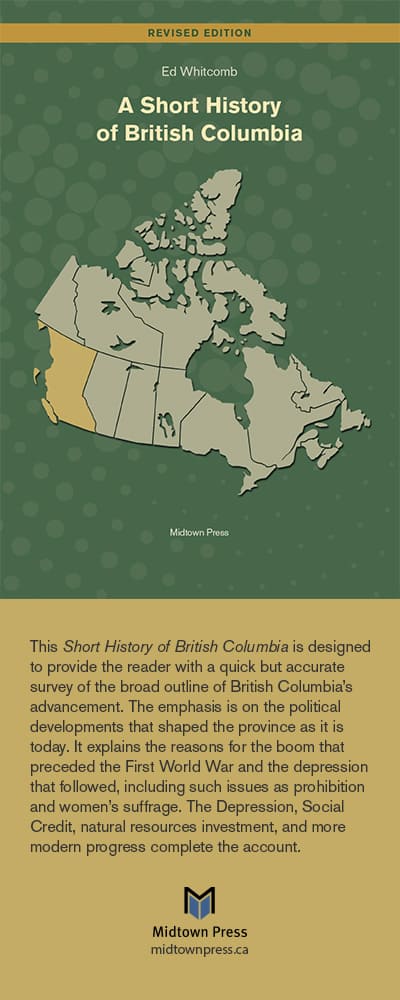





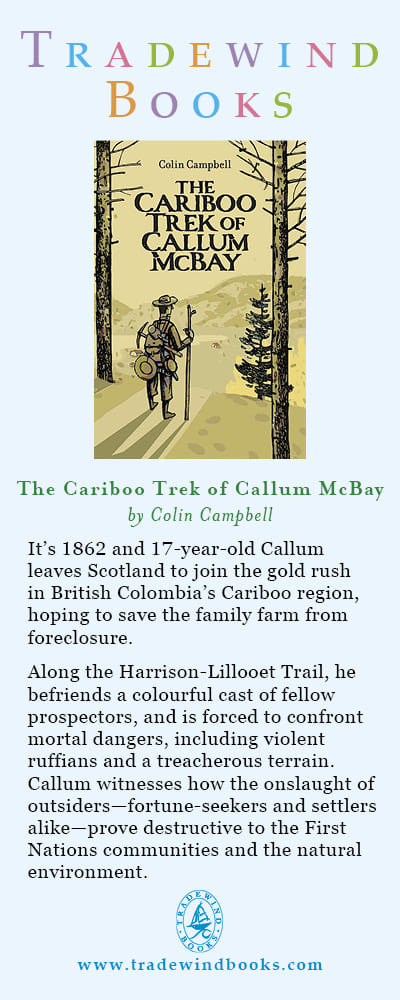
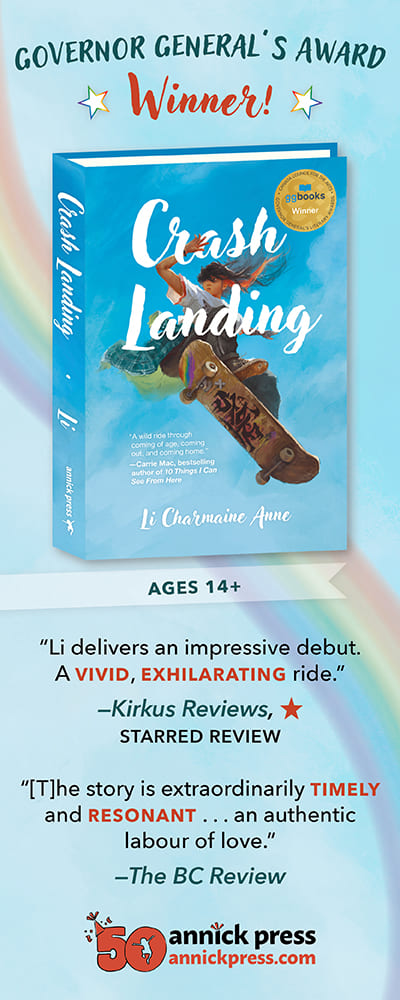



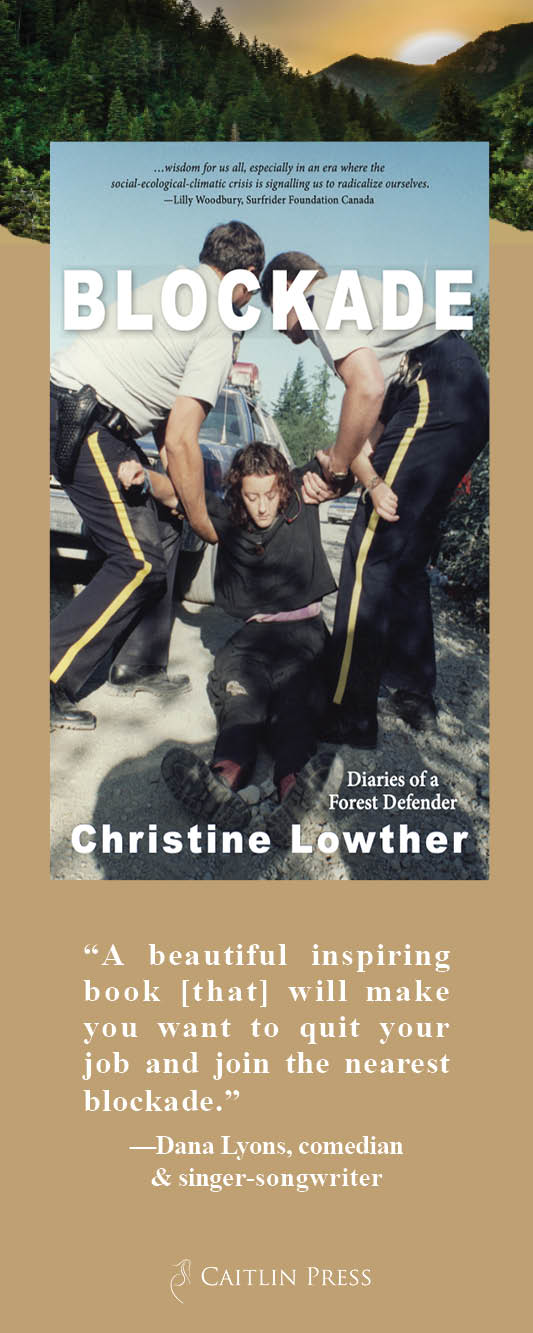


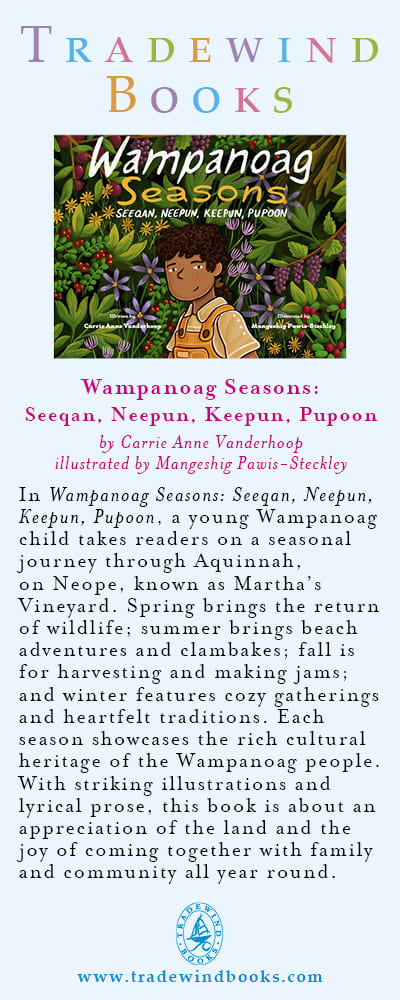




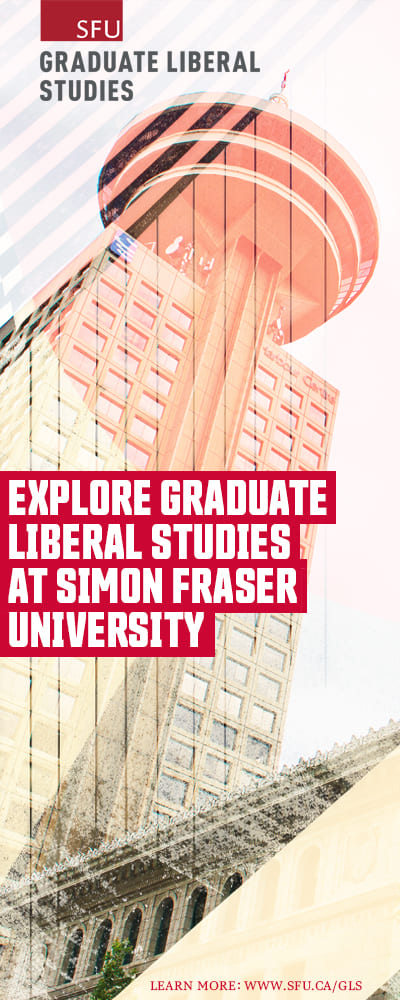


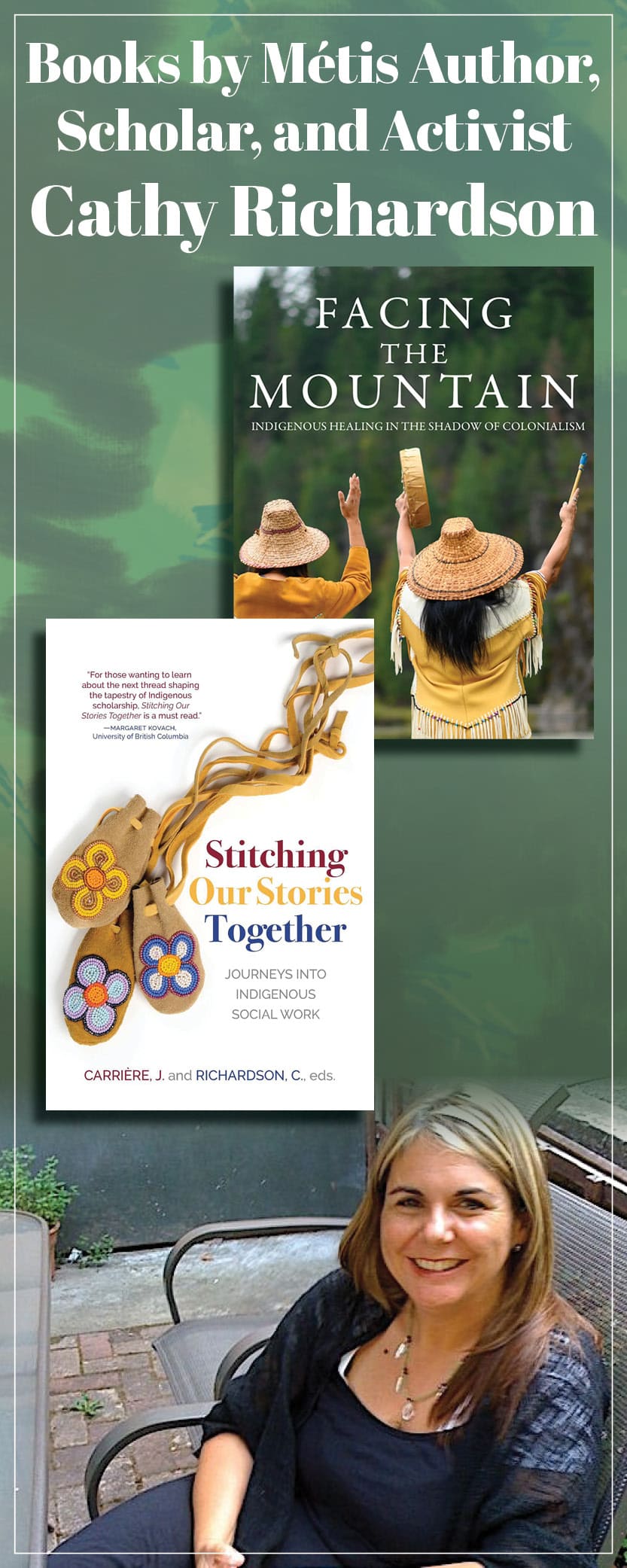


One comment on “Living with Oil?”